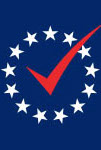Voter Confidence in Context and the Effect of Winning
Working Paper No.: 68
Date Published: 2008-11-30
Author(s):
Morgan H. Llewellyn, California Institute of Technology
Thad E. Hall, University of Utah
R. Michael Alvarez, California Institute of Technology
Abstract:
A number of recent studies examine how confident voters are that their ballots are counted as
intended in U.S. federal elections from 2000 to 2004. One consistent finding of these studies is
that, relative to Democrats, Republican voters tend to be more confident that their ballots are
counted correctly. However, it is also the case that in terms of the national outcomes of the 2000
and 2004 elections, Republicans were victorious. Additionally, research suggests that in the
2004 election voters who cast a paper ballot are more confident relative to those who vote using
an electronic device. Although these results fit nicely into the 2000 and 2004 elections, we
hypothesize that future research of voter confidence should interpret voter confidence within the
context of the election. This hypothesis, and the particular context of the 2006 election, gives
rise to two testable hypotheses. First, we hypothesize that the effect of partisanship on voter
confidence is conditional on which party wins the election. Thus, we anticipate that, relative to
Republicans, Democrats will experience greater gains in confidence following the 2006 election.
Since the 2004 election, greater adoption of voter verified paper audit trail (VVPAT) devices
allows us to analyze the context of the technological debate regarding voting technology. The
second hypothesize we test is that voter access to a VVPAT device leads to higher rates of
confidence among electronic voters. Using a panel dataset containing self-reported confidence
levels before and after the 2006 election, we find empirical evidence that voter confidence is
influenced by the context of the election. First, we find a positive and significant winner's effect;
voter confidence is higher for individuals who voted for the winning candidate. Second, we find
that voters who cast ballots on an electronic voting machine with a VVPAT device exhibit higher
rates of confidence following the 2006 election when compared to electronic voters who do not
have access to VVPAT devices. Finally, in measuring the change in confidence rates before and
after the election we find no significant difference in the change in the confidence rates between
electronic voters with access to a VVPAT device and voters who cast a paper ballot.
Attachment
 Voter Confidence in Context and the Effect of Winning
(Size: 149 KB)
Voter Confidence in Context and the Effect of Winning
(Size: 149 KB)
